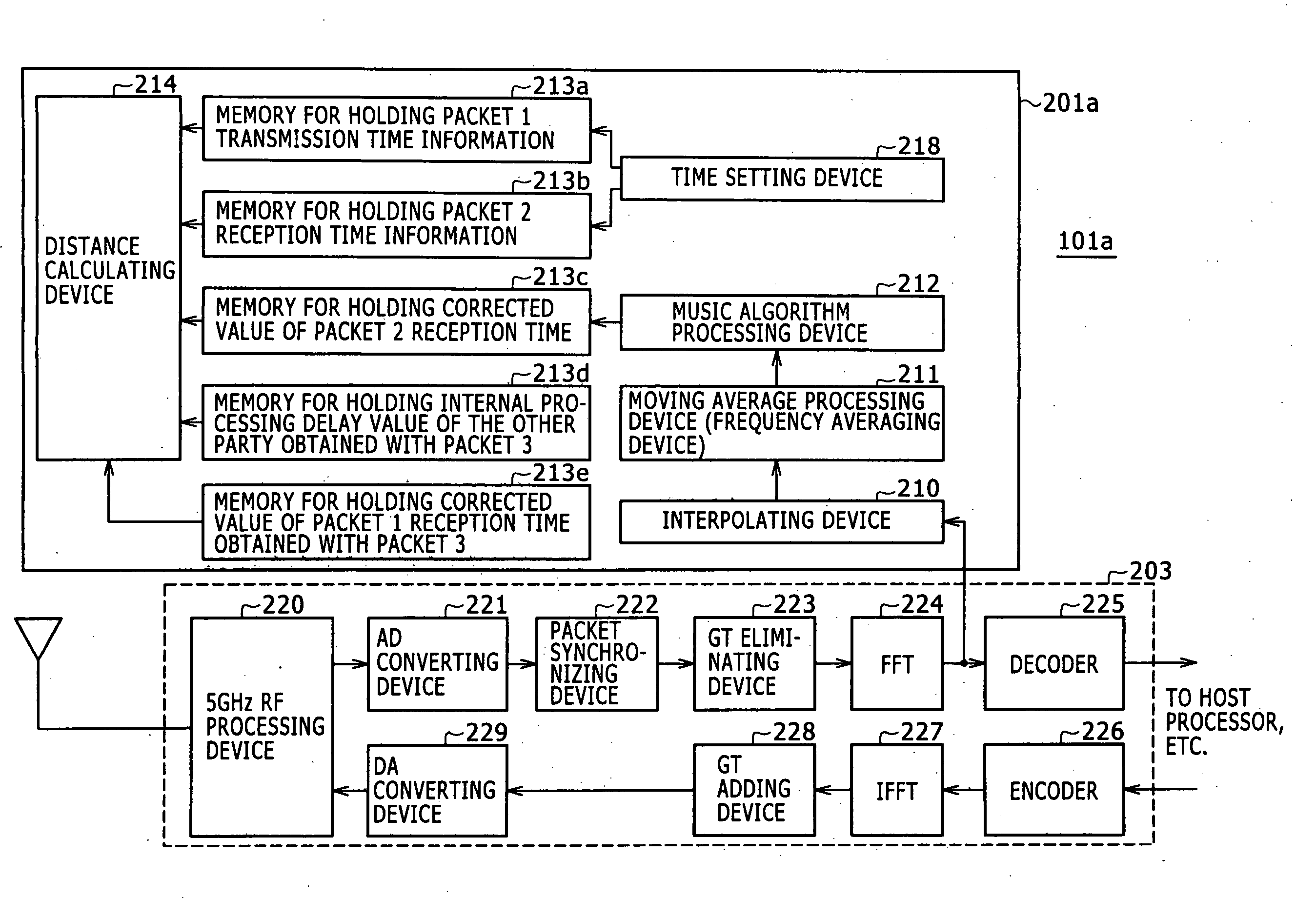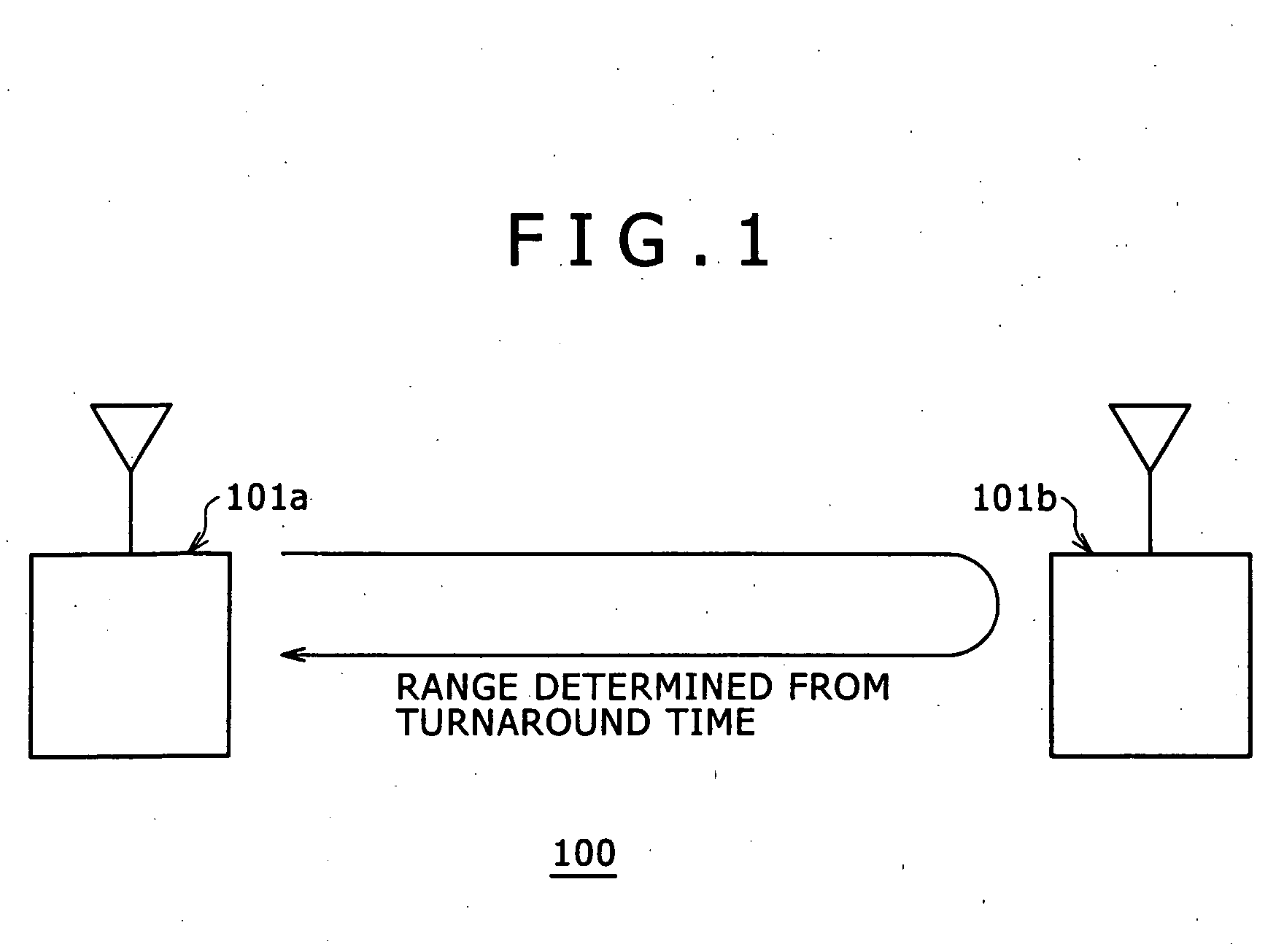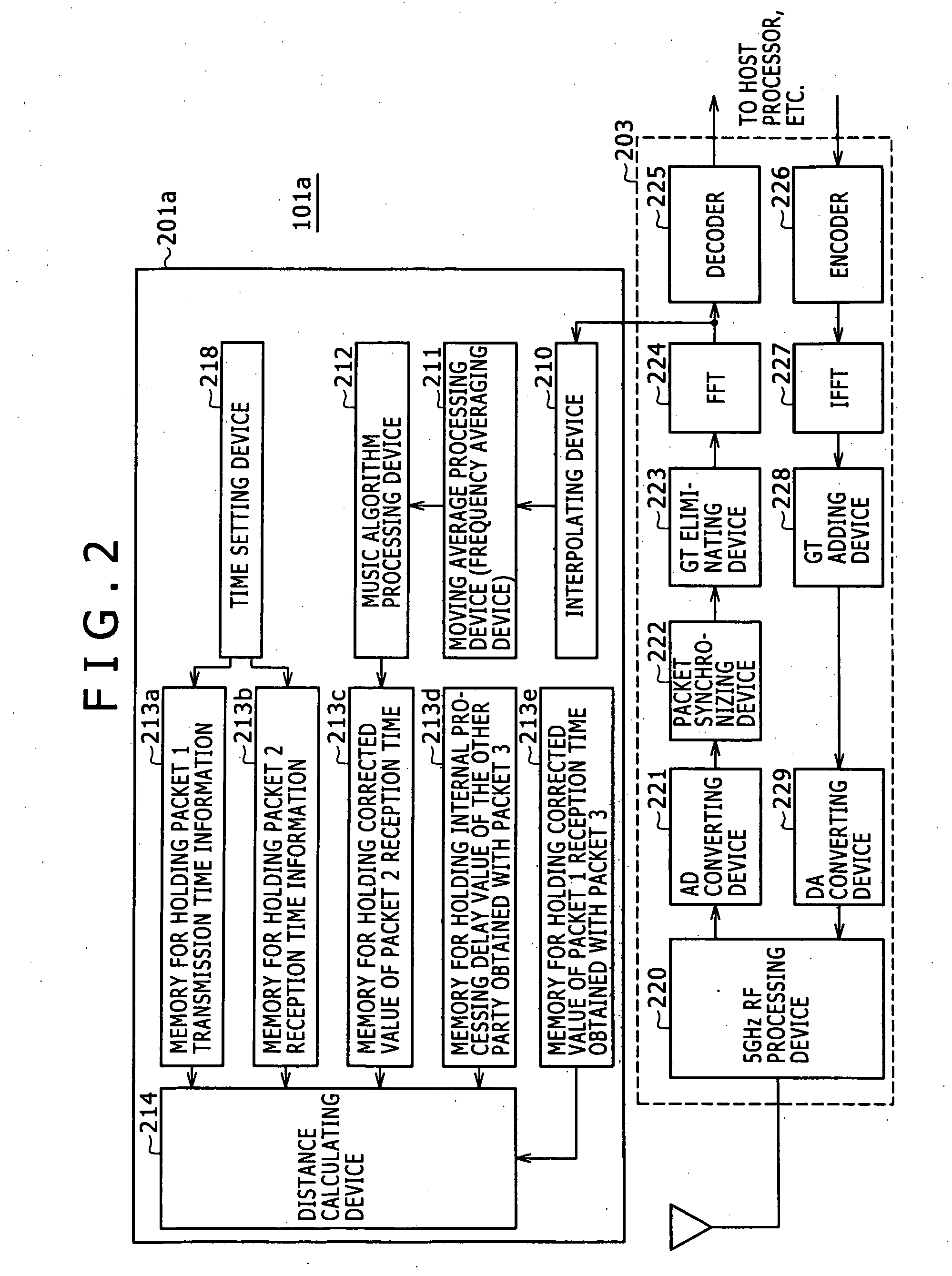Ranging system, transmitting terminal, receiving terminal, ranging method, and computer program
a ranging system and receiver technology, applied in the field of ranging systems, can solve the problems of inability to perform ranging between terminals over wireless lans under ieee 802.11a or the like in the household or in a small office, and the error of ranging between terminals is large, so as to achieve the effect of significantly boosting the accuracy of the measured distance between terminals and reducing the appreciable error of ranging between terminals
- Summary
- Abstract
- Description
- Claims
- Application Information
AI Technical Summary
Benefits of technology
Problems solved by technology
Method used
Image
Examples
first embodiment
[0052] A ranging system 100 practiced as the first embodiment of the present invention is described below with reference to FIG. 1. FIG. 1 is an explanatory view outlining a typical configuration of the ranging system 100 practiced as the first embodiment.
[0053] As shown in FIG. 1, the ranging system 100 includes at least a transmitting terminal 101a (referred to as the terminal A where appropriate) for initiating a ranging process, and a receiving terminal 101b (referred to as the terminal B where appropriate) being the target of the ranging process. Alternatively, the two terminals may switch their roles. As another alternative, the ranging system may include three or more terminals 101.
[0054] The terminals 101 of the first embodiment may illustratively be a personal computer (PC) each. Alternatively, any equipment capable of sending and receiving data over a wireless LAN may act as a terminal of the ranging system 100.
[0055] The ranging process of the ranging system 100 in FIG...
second embodiment
[0114] The terminal 101 practiced as the second embodiment of the present invention will now be described with reference to FIGS. 11 and 12. FIG. 11 is a block diagram showing a typical structure of the transmitting terminal (101c) practiced as part of the second embodiment of the invention, the terminal initiating a ranging process, and FIG. 12 is a block diagram showing a typical structure of the receiving terminal (101d) practiced as another part of the second embodiment, the terminal being the target of the ranging process.
[0115] The ranging system of the second embodiment is configured in substantially the same way as the ranging system 100 of the first embodiment explained above with reference to FIG. 1 and thus will not be discussed further in detail. The terminals 101 of the second embodiment will be discussed in detail where they differ from their counterparts of the first embodiment. The resembling aspects of the terminals will not be described further in detail to avoid ...
PUM
 Login to View More
Login to View More Abstract
Description
Claims
Application Information
 Login to View More
Login to View More - R&D
- Intellectual Property
- Life Sciences
- Materials
- Tech Scout
- Unparalleled Data Quality
- Higher Quality Content
- 60% Fewer Hallucinations
Browse by: Latest US Patents, China's latest patents, Technical Efficacy Thesaurus, Application Domain, Technology Topic, Popular Technical Reports.
© 2025 PatSnap. All rights reserved.Legal|Privacy policy|Modern Slavery Act Transparency Statement|Sitemap|About US| Contact US: help@patsnap.com



